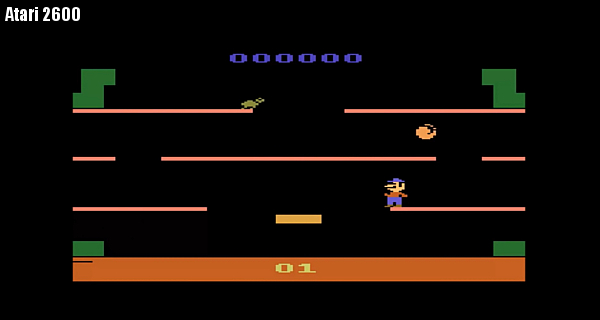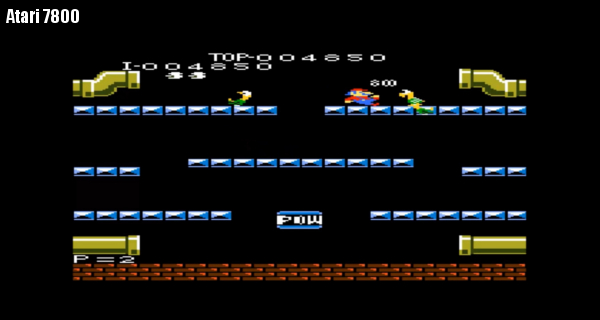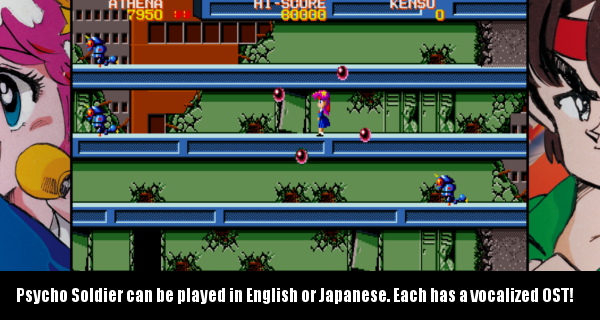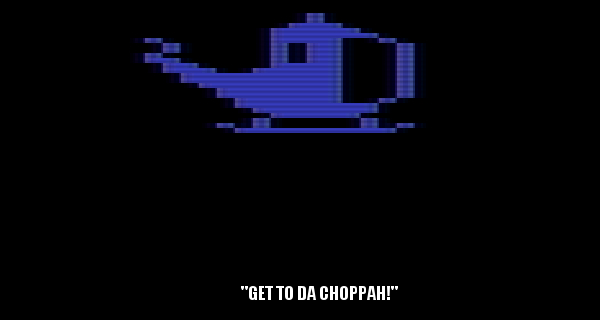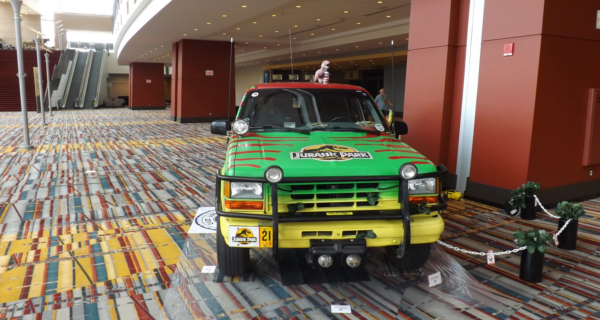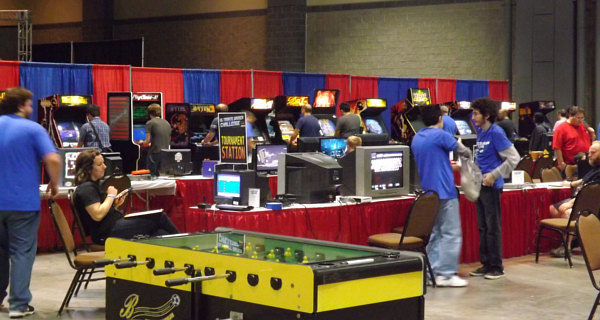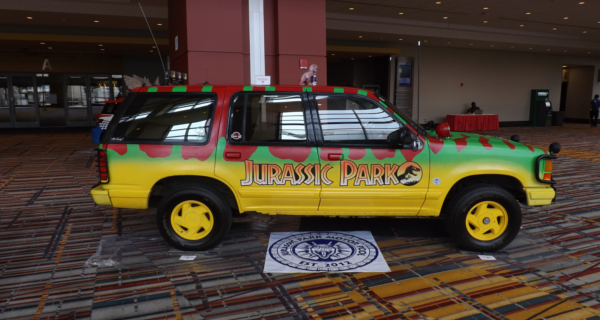
Another year and another RWE. A lot has happened since the last show for me. At the end of last year, I changed jobs and some other life changes happened. And so I have not been as active on here as I would have liked. But I was excited to get out to this show as the opportunity afforded and I was thankfully able to make it out.
This year had one disappointing thing, and that was unfortunately for reasons they couldn’t go into (likely due to NDAs) very deeply, Headcannon was unable to come to the show. For those who don’t know, this is the developer who brought out the very well-received Sonic Origins a few years ago. But things understandably happen in every profession and sometimes plans just have to change on the fly.

Thankfully, this year there were still plenty of other guests and events to see. Some of the guests who made a return included the folks from RetroRGB and Retroware. The voice of NBA Jam Tim Kitzrow came back as did Big Bucks Entertainment and Blitzkrieg Pro Wrestling. Dan Larson of Toy Galaxy was there. 1Up alumni Jeremy Parish and Nadia Oxford also came back. The folks at Retroware had a booth with some demos (I didn’t get the chance to check out.) Some of the newer guests included voice actor Ian James Corlett (of Mega Man and DBZ fame), YouTubers Phoenix Resale, Retro Rick, as well as Tito of Nacho Nacho Productions. Terry Torok was also there. There were also many, many tournaments this year.

Despite not seeing as many returning names as some would have liked, this year still had a very high attendance. More people possibly came out to this year’s show than last year’s. As I entered the Hartford Convention Center this year the line was pretty massive. I spent close to an hour in line to check in after prepaying months earlier.

With that one minor inconvenience out of the way, I made my way to the floor and was immediately in the midst of a slew of vendors. This year leaned heavier into video game vendors than last year, something that oddly enough helped me less since I have a lot of what I want on my vintage console platforms. Still, throughout the weekend I did spend a fair amount of time looking over the booths several times over as it was so busy I was all but guaranteed to miss something good at any given vendor upon a first pass.

My buddy Russ Lyman brought back his venerable Mario Kart ride as well as his Yoshi Bike for display. I spotted the former on my way into the building. As I wandered past the vendor section I spied the returning Blitzkrieg staff setting up the ring for the matches they would hold throughout the show. I got in some early time in the free play area this year. This year they had a Frogger machine so as bad at that game as I am, of course, I had to give it several pathetic attempts at getting on the board. I didn’t make the cut. I managed to get a couple of boards in, but that was nowhere near the scoreboard.

But I didn’t do too bad when I stumbled upon an Atari 2600 running Yars’ Revenge. And who wouldn’t love to play Yars’ Revenge? I put some time into that game over the weekend. Periodically I would take another crack at the game to see how well I could do. I ended up somewhere just shy of 50,000 points.

There was also an impressive sight as there was a Sega Saturn set up with a multitap and 8 original controllers running a copy of Saturn Bomberman. This is something you very rarely see set up in the wild. And so seeing one for the first time in the wild in decades was awesome.

Of course, with the way Saturn aftermarket prices are going, I could never go get one of these for myself. So being able to play it in some capacity in public was remarkable. This was one of the more popular setups in the free play area with good reason. Saturn Bomberman is a classic.

After getting in some time with the games I discovered Big Bucks Entertainment had returned. They were doing a live Press Your Luck contest again so I joined the live audience. Two kids were taking on a college student and only lost due to a late game Whammy. It’s always one of the presentations I look forward to at RetroWorldExpo because it’s something you don’t see done at a lot of shows. It’s the same reason the inclusion of an independent wrestling show is a welcome addition for a lot of attendees.

One of the vendors, Pac-Family Games also did something a little interesting this year. They set up a small display of pre-NES-era platforms with some nice overviews written out about each of them. They thought to include some of the more esoteric machines like the RCA Studio II as well as some of the interesting PONG clones like Nintendo’s Color TV-Game 6. There was also a Vectrex along with Atari’s 2600 and 5200 which made me smile. I had a lot of 2600 stuff growing up, but never had the 5200 or the Vectrex. The Vectrex is one of those really great platforms that just came out at the most inopportune time.

But seeing all of these certainly reminded me of my early childhood. Seeing things like the Colecovision, 5200, and Intellivision games in a store back then blew a lot of people’s minds. But that was short-lived as the crash began and games moved to home computers. But of course, we didn’t know about any of that until our parents brought home a Commodore 64, Atari 400, or an Apple II. It was a while before many of us ever had an NES. Even after Nintendo took the US by storm a lot of the same games were on these computers of varying quality. So many kids didn’t get an NES until a few years after it came out.

It was especially nice seeing a couple of the failed consoles of the era as well. Not many people had the RCA Studio II, Bally Astrocade, or the Emerson Arcadia 2001. And so they’re not really known by most people. So having them out there was really cool.

I didn’t make it into as many panels this year but I did manage to make two on Saturday. The first of which featured Terry Torok. For those who don’t know he was the producer of the original Nintendo World Championships tour and finals presentation in Hollywood. In the panel, he talked a bit about his experience pitching the idea to Nintendo as a means to get parents to take a bit of an interest in their kids’ hobby at the time while also building interest from the general public. And he spoke of some of the parallels between what they accomplished with the NWC and with what many of today’s eSports events have done. He talked a bit about his hopes that collaboration could be a major factor in future events. Where eSports could not just focus on the games themselves, but how players could be incentivized to help each other get better, resulting in more people playing at a higher level. He also went over four main pillars of eSports, how there are pillars for the games themselves, the players who become personalities, the core audience, and the general audience. Bridging all of those is a major part of an organization’s success. He also talked about some of his work building events up in other parts of the world and a new analog board game in development. Two lucky winners got early versions as prizes. All in all an interesting panel, even if you aren’t following competitive gaming scenes of the past or present.

After that panel, I roamed the floor again for a bit and I managed to catch one of the undercard matches Blitzkrieg was putting on. It was a solid match with some old-school spots featuring a big man heel and a smaller performer in the face role. There was a fair amount of the face fighting from underneath and building up momentum. There was a swerve finish when both combatants knocked each other out for a Double K.O.. Overall not bad even if the finish was a little confusing for anyone unaware of a larger program between the two wrestlers. At certain points throughout the convention, former Brood member Gangrel made appearances, but I didn’t get the chance to see him.

After that, I caught some of the Street Fighter 6 tournament. While I didn’t see anything as crazy as one might see at a big show like EVO I didn’t expect to. What I did see was a lot of very good players that could still easily defeat me playing some very close matches. Not very many of the rounds were lopsided and for every one of the handful of Perfect K.O.s was a very close match to follow it up with. Alex Smith clinched the final spot, while Kite made an impressive run through a loser’s bracket to make it back to the top. But ultimately lost. But what a great showing it was with things culminating in a Juri mirror match.

I wandered around the floor a bit before going off to the next panel. I stopped by my pal Antionette’s booth and found a hilarious Silent Hill 2 parody featuring Doug Funny. She does all sorts of great pop culture-themed art. You can check out her Etsy shop for some of her work and get some items for yourself. Next to her was Hitbox Designs, which had some very impressive Splatoon-inspired pins I pretty much had to buy. Also returning was Tom Ryan Studio and he had a few great Masters Of The Universe pieces of art as well as pins. So I made sure I got myself an Orko pin.

After that, it was off to the next panel. Tim Kitzrow was back for a Q&A panel and it was quite entertaining. He was also very kind and down to Earth talking to a few of us before the panel started about growing up in Albany, NY, and visiting family in Connecticut and Rhode Island often before he moved out to Chicago. In the panel, he elaborated a bit on how he found work with Midway while working at a restaurant in Chicago as he was lining up other work at Second City. Yes, the same venue that gave us SCTV alumni. Some of his earliest jobs with Midway were voice samples for Pinball machines. Eventually, he would get the job on NBA JAM as the announcer which would carry over into many of Midway’s other arcade sports franchises like NFL Blitz and NHL Hitz. One of the questions he was given was if he got to meet NBA players during the creation of the game, and he said those meetings mostly happened after the game was out. He told us one story about how he waited on Michael Jordan which led to a custom NBA JAM machine being produced for himself as he had wanted to be a playable character in the original release but wasn’t included due to clauses in his licensing deals at the time. Interestingly someone found the Jordan player data still in the ROM files years later and was able to make him playable on a stock NBA JAM cabinet. I got to ask him what he does in terms of hobbies and it turns out he plays music for fun even to this day as well as outdoor activity.

After that panel, it was back on the floor for a bit before the first day ended. I was finally able to get the Splatoon 2 Inkling Girl Amiibo I’ve been hunting for a few years now thanks to one vendor having a sole mint on card figurine. They also had a mint-on-card vintage King Randor from the original Masters Of The Universe line, but I simply could not afford to buy it as even a loose figure goes for almost as much as a AAA video game these days. Still, it was awesome to see one not only carded but with a card in such great condition.

With day one under my belt, it was off to get some food and then some sleep as I would be commuting back to Hartford for day 2. I stopped off at Rosy Tomorrow’s which is an institution in my area of the State. The food is pretty good and the atmosphere is rather nice. They often have live music going on, but this particular weekend they didn’t. Still, I had some loaded chicken tacos and a nice pint of Guinness.

When I got back to the show for day 2 things weren’t quite as crammed with visitors but it was still a fairly busy floor. I got in some gaming before the free play area filled back up again. I was able to clear Third Strike on about 4 credits which is unheard of for me. Especially since Gil is one of the cheapest bosses in video game history. And I gave some love to Killer Instinct 2 along with a few more sad attempts at Frogger.

Somehow I had missed the panel with Ian James Corlett, but he was kind enough to sign a figure I had picked up for a coworker who is a huge DBZ mark. And he was also kind enough to do a few quips from the old Ruby-Spears Mega Man show, where he played the Blue Bomber himself. A very pleasant interaction.

I had also somehow overlooked the fact that Canvas Quest was back with its excellent line of video game-themed pins. So I picked up several of them for family members. We had a nice interaction about the T-shirt I’d gotten from Neatoshop. They turned out to be fans of both Duran Duran and Masters Of The Universe so the mashup really appealed to them.

Another booth I checked out was for a game called Below The Ocean a quirky puzzle platformer by Ismael Rodriguez. And after playing the demo I came away pretty impressed. At first glance, you may confuse it for Doinksoft’s Gato Roboto as it shares a similar vintage home computer look. But it plays nothing like it. For starters, it is not a search action game like Gato Roboto was. There are no cats driving vehicles either. Instead, I was reminded of classic computer games in the vein of Thrust and Bubble Ghost. The idea is you’re a deep-sea diver who consistently needs to find oxygen tanks to refill your air supply. Not only do you need to find these tanks for air you also use your air hose in a variety of ways to solve puzzles to progress to the next screen. It’s really cool.

He also had a demo for Tuttle, a game that combines 80s arcade platforming with inventory management as you grow giant flowers and then cut them down for their seeds so that you can grow bigger flowers for points. Before long there are giant insects trying to eat the plants and so you have yourself something unique that sits somewhere between something like Activision’s Pressure Cooker and Sega’s Fantasy Zone. Both of these are out on Steam, and I hope to eventually get to Below The Ocean. I know this past year has not gone the way I wanted in getting writing done. But I hope I’ll be able to adjust soon.

My pal Doug Mandeville was at the show vending and while I didn’t get a photo he had an elaborate hoax of an item as a conversation piece. He had a package of Super Mario Bros. Oreos in a plastic box with a grade facsimile on it. At first glance, you would be forgiven for thinking he’d actually sent a bag of cookies out to be graded, but upon further inspection, it was quite the convincing troll. That said, he did have some decent pieces including a sealed big box DOOM Shareware and a number of sealed 2600 games.

I was also able to see the tail end of a Deal Or No Deal that day. The contestant managed to get all the way down to the final two briefcases before making a deal with the bank. I didn’t see what he ultimately got for a prize, but it was really cool seeing someone do that well.

I did manage to get into my buddy Mike Levy’s panel. This year he discussed the EGM Fax he famously discovered which showed off some of the creative direction some of the Konami staff considered taking Castlevania in at one time. He’s a massive fan of Castlevania and is a wellspring of information on the series’ lore. As such, the rest of the panel focused on the earlier style of Castlevania games where the focus was predominantly on action platforming with exploration elements being secondary save for a couple of examples like Simon’s Quest. Then he analyzed why the series has shifted focus to more exploratory games like Symphony Of The Night before ultimately trying to clone Sony’s God Of War franchise with later PS2 releases and games like the Lords Of Shadows series. All in all, an interesting breakdown of the franchise and some of its spiritual successors past and present.

After that panel, I caught the tail end of an auction where I saw a few items of interest like a sealed Metroid Prime for the Nintendo Gamecube, a few Disney display standees, a case of unopened Kingdom Hearts figures, and a sealed Marvel 3 fight stick. With that, the end of the show was just around the corner. With that, I said my goodbyes and left the Convention Center.

But my weekend wasn’t completely done. I headed over to City Steam Brewery for my semi-annual visit. This year no one was able to meet me over there due to commitments but it was a good visit nevertheless. I had some of their Alan Is More Stout and an awesome Mac and Cheeseburger. The stout is terrific, with some notes of chocolate and coffee. I ended up getting a growler to take home with me and a pint glass to boot. Every time I have ever gone there the service has been great, the food has been amazing, and the beers are some of my all-time favorites. If you ever find yourself in Hartford and you’re of legal age give them a visit. They even have frequent stand-up comedy shows and karaoke nights.

But with dinner taken care of it was time to leave the State capitol. I had a great weekend and I can’t wait to see what they do next year. Hopefully, some of the previous years’ guests will return. Hopefully, some of your ideal guests will get booked. Hopefully, there will be some other attractions and even more tournaments. Hopefully, I can stop saying “Hopefully.”. In any event, I’m looking forward to next year’s event already.



